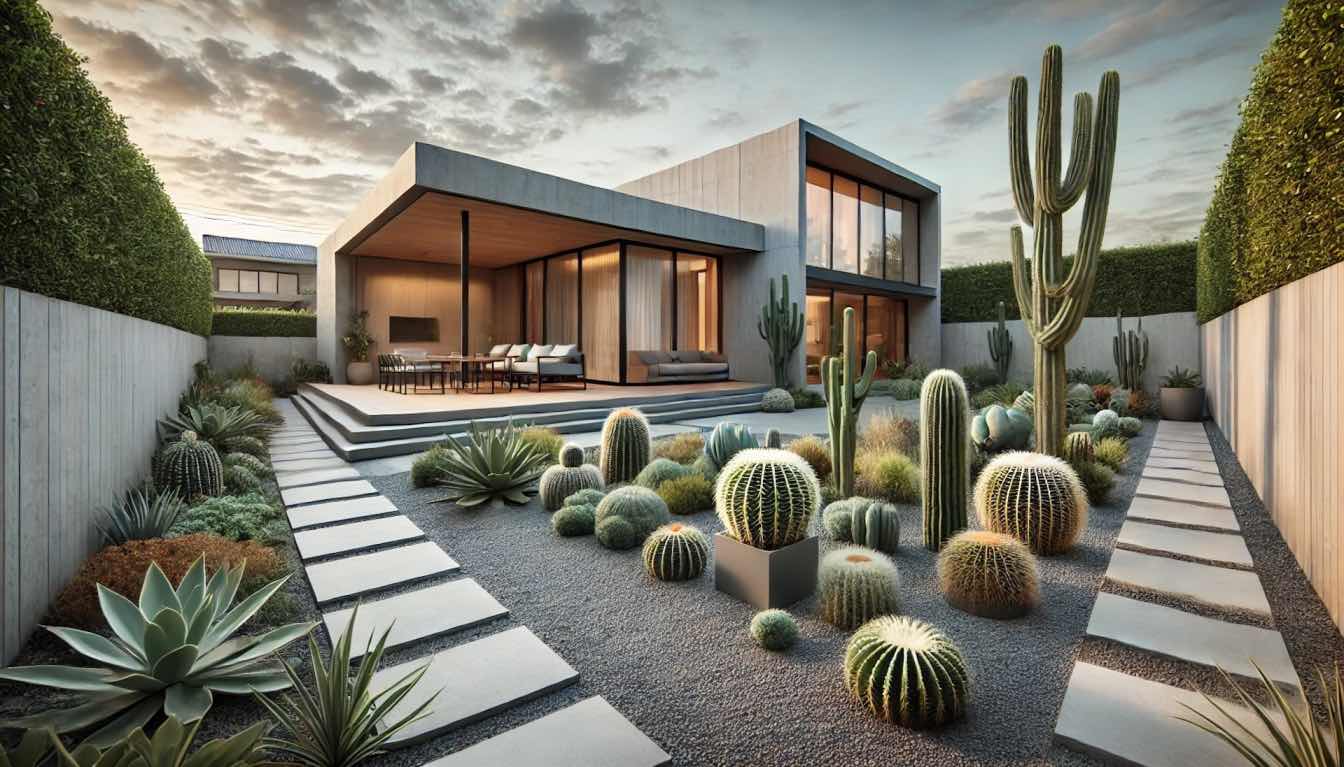The most remarkable gardens share a unifying trait: a masterful balance of design elements and principles. Colors, textures, lines, and forms come together to evoke emotions and craft an engaging experience for visitors. However, it is the thoughtful application of design principles that organizes these elements into a cohesive and impactful arrangement. When combined, these elements and principles harmonize to create gardens that captivate and leave a lasting impression.
Focal Point and Order
A thoughtfully planned garden combines organization with a clear focal point to capture attention. Maintaining order in a garden is essential, as it helps the space avoid a cluttered or chaotic appearance. This sense of structure brings balance and supports the homeowner in keeping track of each plant, making care and maintenance more straightforward.
Creating a focal point is crucial, as it serves as a central visual anchor, naturally guiding the viewer's gaze throughout the space. Get Malone's Landscape management services to make sure your focal point is the best it can be.
Form
Form refers to the overall shape or structure of a plant or hardscape element. Plants, for instance, come in a wide range of forms, such as upright, groundcover, spherical, or free-flowing shapes. Likewise, hardscape features can vary in both height and shape, examples include stone pathways, retaining walls, or pergolas.
Achieving a balanced landscape design means thoughtfully incorporating these forms. For instance, a formal garden might include neatly pruned and symmetrical shrubs, while a more casual yard often highlights plants with natural, flowing shapes. It’s the thoughtful combination of these varied forms that creates the foundation for a cohesive and appealing landscape.
Line
Lines play a crucial role in garden design, offering endless possibilities to shape spaces and guide movement. They help define spaces, create patterns, shape forms, and unify design themes.
Lines can emerge where different materials meet, such as a lawn bordering a brick patio, where edges of objects stand out against their background, like tree silhouettes against the sky, or through intentional placement of materials, like fencing.
Directional lines can dramatically impact a garden’s atmosphere, straight lines bring a sense of formality and draw attention to focal points, while curved lines feel casual and invite exploration. Vertical lines emphasize height and pull the eye upward, whereas horizontal lines suggest breadth, giving the illusion of more generous space.
Shape and Form
Form and shape are integral to every garden, influencing its style and ambiance through architectural features and plant choices. A formal garden might feature crisp, defined shapes, while an informal one embraces flowing organic lines.
When describing plants specifically, shape refers to their two-dimensional outline or silhouette, whereas form encompasses both shape and depth, lending a three-dimensional presence. To understand form more fully, imagine a plant in full leaf, where its depth is accentuated by the layering and volume of its foliage.
Color
Color plays a pivotal role in landscaping, as it significantly influences the overall design and perception of the space. Landscapers carefully select colors with a purpose, maximizing their impact in achieving desired effects.
For instance, warm tones like red and orange can create the illusion of objects appearing closer, adding depth and warmth to an area. On the other hand, cool hues such as blues and greens can make elements feel further away and are often utilized to enhance perspective, bringing balance and harmony to the landscape design.
Endnote
Successful landscape design involves many different elements. While it takes practice and expertise to perfect them, understanding even the basic principles can help you get started the right way. Whether you're designing your outdoor space yourself or collaborating with a professional, keeping these key ideas in focus will help you make the most of your landscape.





